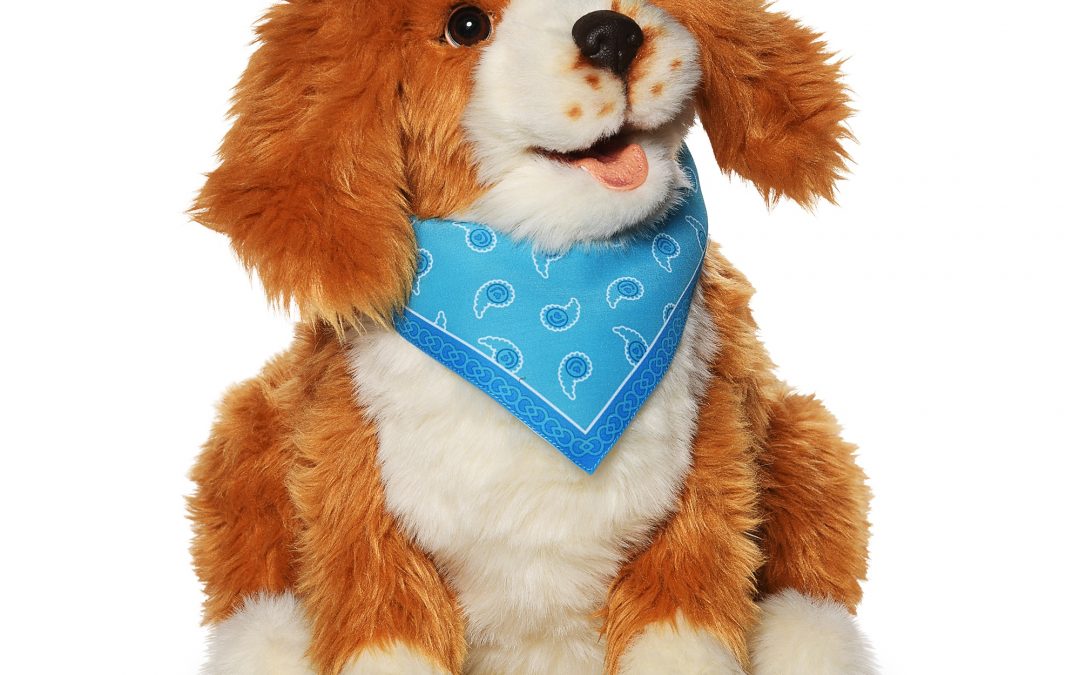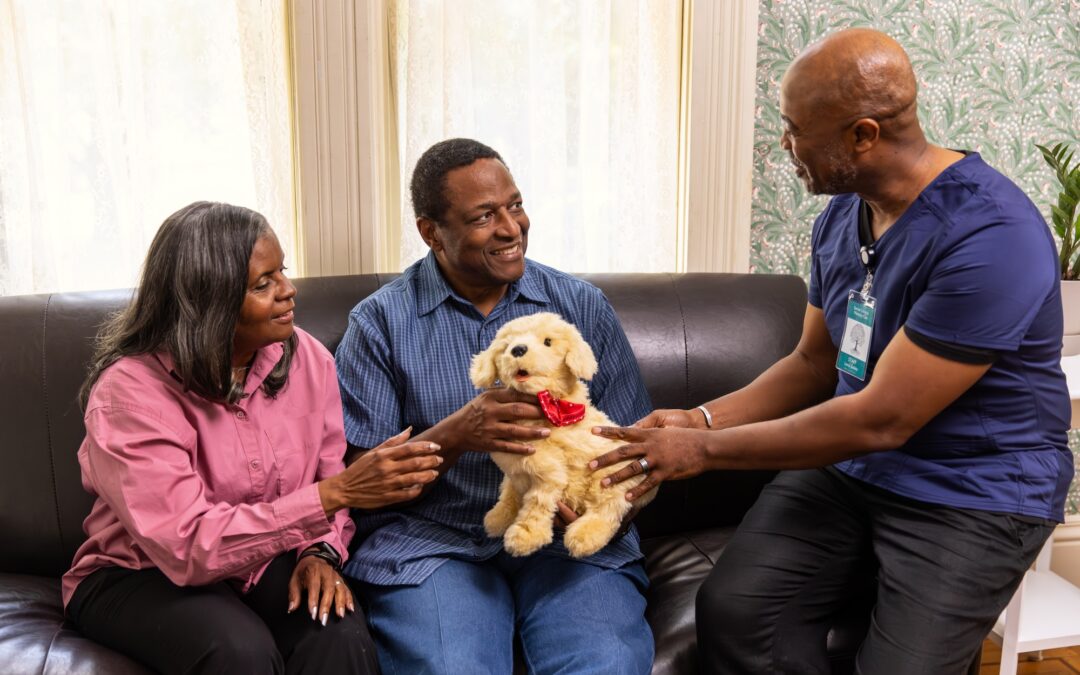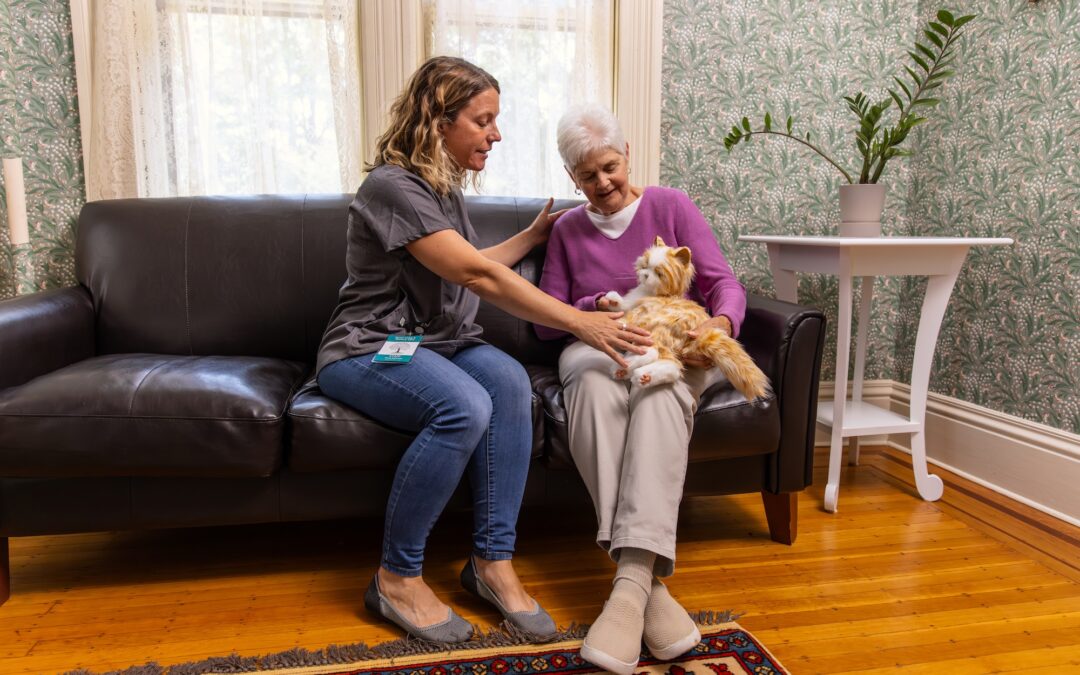
Ageless Innovation Appoints New Chief Financial Officer
Dan Gipson, CPA and Senior Financial Executive, Brings Nearly 30 Years of Financial and Accounting Experience to Global Company.

Dan Gipson, CPA and Senior Financial Executive, Brings Nearly 30 Years of Financial and Accounting Experience to Global Company.


Studies consistently demonstrate that older adults who are lonely have higher rates of depression and increased mortality risk. Pet ownership may be a solution for loneliness; however, challenges related to pet ownership exist for older adults. Therefore, researchers and practitioners are examining the use of animatronic pets to reduce loneliness.
To determine the feasibility of an animatronic pet program, and whether ownership of animatronic pets would decrease loneliness and improve well-being among lonely older adults.
Eligible individuals were identified as lonely through a prior survey. Participants were provided with the choice of an animatronic pet and completed T1/T2/T3 surveys.
Attrition was high; 168 (63%) participants completed T1/T2 surveys, and 125 (48%) also completed a T3 survey. Post survey data indicated that loneliness decreased, while mental well-being, resilience, and purpose in life improved. Frequent interactions with the pets were associated with greater improvement in mental well-being and optimism.
Animatronic pets appear to provide benefits for the well-being of lonely older adults. Future studies should employ randomized controlled designs examining the impact of animatronic pets.

Delirium is highly prevalent in hospitalized patients and is a strong and consistent negative predictor of length of stay, mortality, and long-term cognitive outcomes.
Symptoms commonly associated with delirium include reduced ability to focus, sleep disturbances, psychomotor agitation, and emotional disturbances. The management of the behavioral disturbances of delirium is challenging. Although non-pharmacologic means to reduce the duration or severity of delirium are advocated, there are limited established therapies beyond early physical mobilization, reorientation, attempting to enhance natural sleep patterns, and bedside sitting.
Recently, the use of robotic pets has been reported to be helpful in reducing agitation in nursing home patients with dementia.
Given that dementia is a major risk factor for delirium, it is reasonable to speculate whether such devices could be useful in a hospital setting. To this end, we initiated a pilot study to assess the feasibility of using robotic pets as a non-pharmacologic behavioral intervention for intensive care unit (ICU) patients with delirium.
We recruited 20 subjects with ICU delirium, at our hospital, from July 2017 to December 2017. The institutional review board approved the study. Delirium was confirmed using the Confusion Assessment Method for the ICU scale.
After written informed consent was obtained from the subject’s proxy, the subject received a new “Joy for All” robotic cat (Hasbro, Pawtucket, RI). The cat is battery-operated and can purr, meow, and react to touch. The family and bedside nurse were encouraged to use the cat with the subject (Figure). At 3 days post-enrollment, the subject (if able) and family (if available) were asked to complete a 5-question survey and to provide unstructured feedback. The same survey was e-mailed to all ICU nurses, support staff, and clinicians (n ∼ 400). Survey questions were graded on a 5-point Likert scale (from 1 [“strongly disagree”] to 5 [“strongly agree”]). Twenty-three surveys were returned from subjects and their families, and 70 were returned from ICU support staff.

This randomized controlled trial at an inner city community hospital examined the effect of a robotic pet (cat or dog) on cognition, loneliness, depression, delirium, falls, restraint use, and 1:1 companion use in 160 adults over age 65. The study utilized robotic pets which have an audible heartbeat and interact by purring or barking, turning their heads, opening/closing their eyes, snuggling, wagging their tails, moving their paws, and showing their bellies.